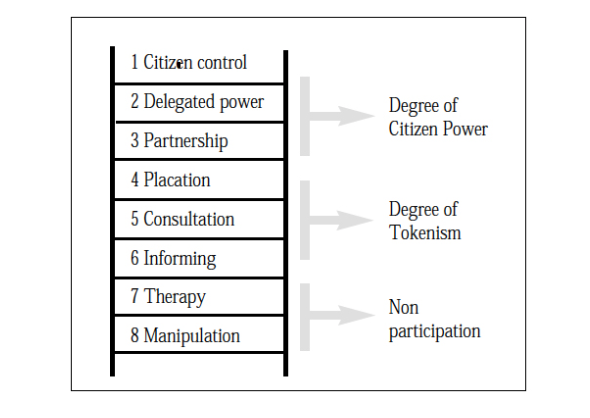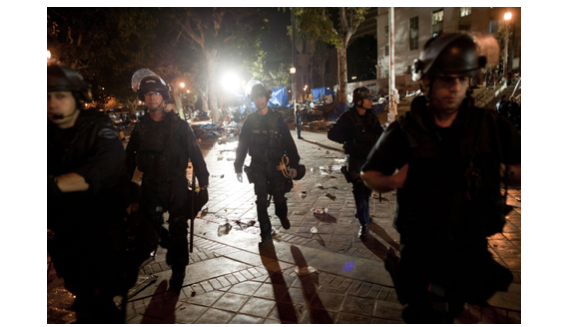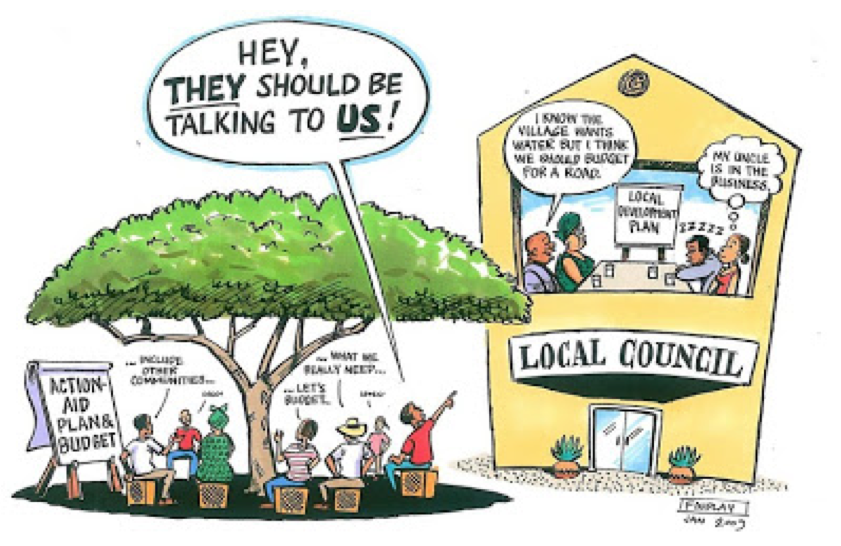CommentsPLANNING WATCH-In my years at LA’s City Hall, the most insightful comment I ever heard from a colleague was, “When you have power, you don’t need empowerment.”
I have thought about this often. Now, when I look at the vast array of citizen participation/empowerment ploys practiced by City departments, I realize they give the public the subjective feeling of decision-making, but without any decision-making power.
Yes, many devoted Angelenos are involved with their Neighborhood Councils. Community activists also attend EIR scoping meetings and show up at workshops and public hearings for a precious minute before a City-owned microphone. They also submit thoughtful oral and written testimony to challenge projects big and small. But, the well-intentioned neighborhood activists can rarely overturn a land use decision, especially for real estate ventures championed by “generous” developers and City Hall lobbyists adept at pay-to-play work-arounds.
So, let’s take a deep dive into these empowerment practices, more recently branded as participatory planning. The best analysis of them is now 50 years old. It's famous title is a Ladder of Citizen Participation, written by Sherry Arnstein in 1969.

Since Arnstein’s famous article, there has been an important new empowerment wrinkle. In L.A. they are called Neighborhood Councils, in New York City Neighborhood Boards, in Seattle Community Advisory Committees, and in the District of Columbia Advisory Neighborhood Commissions.
The names may vary, but their genesis comes from Robert Putnam’s well-known book Bowling Alone. Putnam, the former Dean of Harvard’s Kennedy School of Government, carefully documented the loss of social capital in the United States, which means declining participation in community groups that bind local residents together. As a remedy, Putnam proposed two new institutions. Public schools would create smaller learning communities, while cities would establish neighborhood councils. In both cases, he presented these new bodies as empowerment tools, through which local government would give the public the feeling of community and participation, but without yielding any real decision-making power.
When implemented in Los Angeles through the revised year 2000 City Charter, the City’s fathers and mothers chose the path of self-aggregating Neighborhood Councils appended to City Hall, each with a modest budget and detailed governance requirements. Twenty years later the Los Angeles Department of Neighborhood Empowerment lists 99 local councils. If we go back to their genesis, their purpose was not limited to Putnam’s agenda of increasing neighborhood cohesion. In addition to blocking secessionist ballot initiatives for the San Fernando Valley, Hollywood, and San Pedro, the new councils also supplanted hundreds of local, organic block clubs, residential groups, and homeowner associations. In the 1980s and 90s these groups were extremely effective through their lawsuits and political mobilizations to slow real estate developments. Their cumulative efforts resulted in most of LA’s Specific Plans, Historical Preservation Overlay Zones, and updated General Plan elements.
Two decades later most of these bottoms-up organizations have faded away, replaced by carefully regulated, City Hall-funded Neighborhood Councils. Most of these Neighborhood Councils take their lead from City Hall. For example, at City Hall's recently hosted Neighborhood Congress, nearly all workshops included one or more City officials. Their job was to cement the dependent empowerment relationship flowing through the veins of the Neighborhood Council system.
Other empowerment tools supplement LA’s Neighborhood Councils. They create additional ways for the public to weigh in on local projects, most of which are private sector real estate ventures.
Early notification lists include City Planning’s Area Planning Commission Agendas and list of new zoning cases. Most of these lists are sent to LA’s 99 Neighborhood Councils and focus on individual real estate projects. As for public improvements, public buildings, and new planning and zoning ordinances, there is little public notification. As a result, most Neighborhood Councils devote their time and energy to private, not public, projects.
Public workshops are not legally required but used to brief community activists on City Hall proposals. At one time workshops solicited opinions from local residents, but now consist of display boards accompanied by City Planning staff whose job is to pitch City Hall’s intentions.
Notifications, usually mailings to property owners and residents within 500 feet of a proposed project, publicize discretionary zoning wavers. Newer planning processes either have no notification requirement, or like Community Design Overlays and some Density Bonus projects, only notify immediately adjacent residents.
Public hearings are required for most discretionary zoning actions, such as zone changes and zone variances. Members of the public are allowed one or two minutes to speak before a City Commission, Council Committee, or full City Council.
Public testimony can be submitted for all discretionary actions. These comments are added to publicly accessible files, but like oral remarks, there is no way to guarantee that decision makers consider them.
Missing from this list are Community Plan Advisory Committees (CPAC’s) for LA’s 35 official Community Plans. After extensive preparation and subsequent City Council deliberations, this ordinance, much higher on Sherry Arnstein’s ladder of citizen participation, was flushed down the memory hole in 1988. Several CPAC’s then operated on their own – in Brentwood, Pacific Palisades, Northeast LA, and South Los Angeles – but they either bit the dust or became Neighborhood Councils.
What are the alternatives to these forms of non-participation and tokenism?
Lawsuits: They are expensive, but City Hall’s rush to play fetch with real estate developer spawns many technical errors. The hubris of local officials opens the door to successful litigation against City Hall, such as the Superior Court’s rejection of the City Council-adopted 2012 Update of the Hollywood Community Plan.
Public exposes. While most individuals and community groups opposed to a real estate project or plan submit written comments, they rarely publish them. In my view, this is a mistake, and I firmly believe that written testimony should be widely shared. In addition to CityWatch, there are smaller publications in LA that need to be approached, like the North Valley Reporter, Knock-LA, Medium, LA Observed, LAist, LATaco, as well as self-publication through websites, Facebook, Twitter, and Instagram.

Mayor Villaraigosa ordered the LAPD to crush LA’s Occupy movement
Mass Movements: Organizing is painfully hard, but large, outspoken public actions make a clear impression on City Hall. We need to remember that Democratic Mayor Antonio Villaraigosa chose to violently crush LA’s Occupy movement. In November 2011 he ordered 1,400 cops in riot gear to hide away in the basement of City Hall. He then directed them to emerge in the middle of the night to club and arrest 300 hundred remaining Occupiers. Occupy was tactically defeated, but the presidential campaigns of candidates like Senators Bernie Sanders and Elizabeth Warren reveal that Occupy’s central issue, economic inequality, still resonates. It continues to bubble up as student debt, poor health care, expensive forever wars, mounting homelessness, rent gouging, and widespread gentrification. Furthermore, never-ending handouts to real estate speculators in Sacramento (SB 50) and Los Angeles (TOC Guidelines) reveal this organizing issue is still alive and well.
Joe Hill’s famous advice, “Don’t mourn, organize!” applies to Los Angeles.
(Dick Platkin is a former Los Angeles city planner who reports on local planning issues for CityWatch. He serves on the board of United Neighborhoods of Los Angeles (UN4LA) and is co-chair of the new Greater Fairfax Residents Association. Please send comments and corrections to [email protected].) Prepped for CityWatch by Linda Abrams.
















